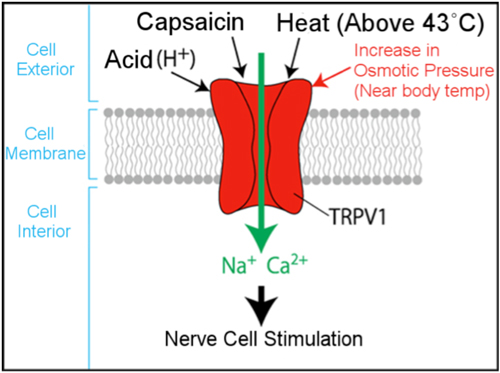
National Institute for Basic Biology




2011.07.15
Osmotic pressure of our body fluids (blood, cerebrospinal fluid, and other extracellular fluids) is always maintained at approximately 300mOsm/kg. This body fluid homeostasis is essential for life, therefore our bodies have a mechanism to monitor the osmotic pressure of body fluids. As dehydration causes an increase in osmotic pressure the body responds by creating a “dry mouth” sensation that causes one to drink, as well as by releasing an antidiuretic hormone (vasopressin) from the pituitary gland into the blood, causing a reduction in urine production. TRPV1 is well known as a channel that opens in response to stimuli such as capsaicin (the spicy component of chili peppers), acidity, and heat. But because TRPV1 knockout mice show abnormalities in the regulation of the osmotic pressure of body fluids, it was suggested that TRPV1 is implicated in the osmotic sensing mechanism.
The research group of Professor Masaharu Noda, Division of Molecular Neurobiology at NIBB, demonstrated for the first time that TRPV1 is sensitive to osmotic pressure at near body temperatures. Also, that this response is synergistically increased by capsaicin and acidity. This achievement is an important step to elucidating the mechanism that maintains the homeostasis of our body fluids. In addition, these results are important to understanding excessive thirst in patients with diabetes (polydipsia), as well as the sensing mechanisms of pain. Details of this research will be published in the American scientific journal ‘PLoS ONE’.
